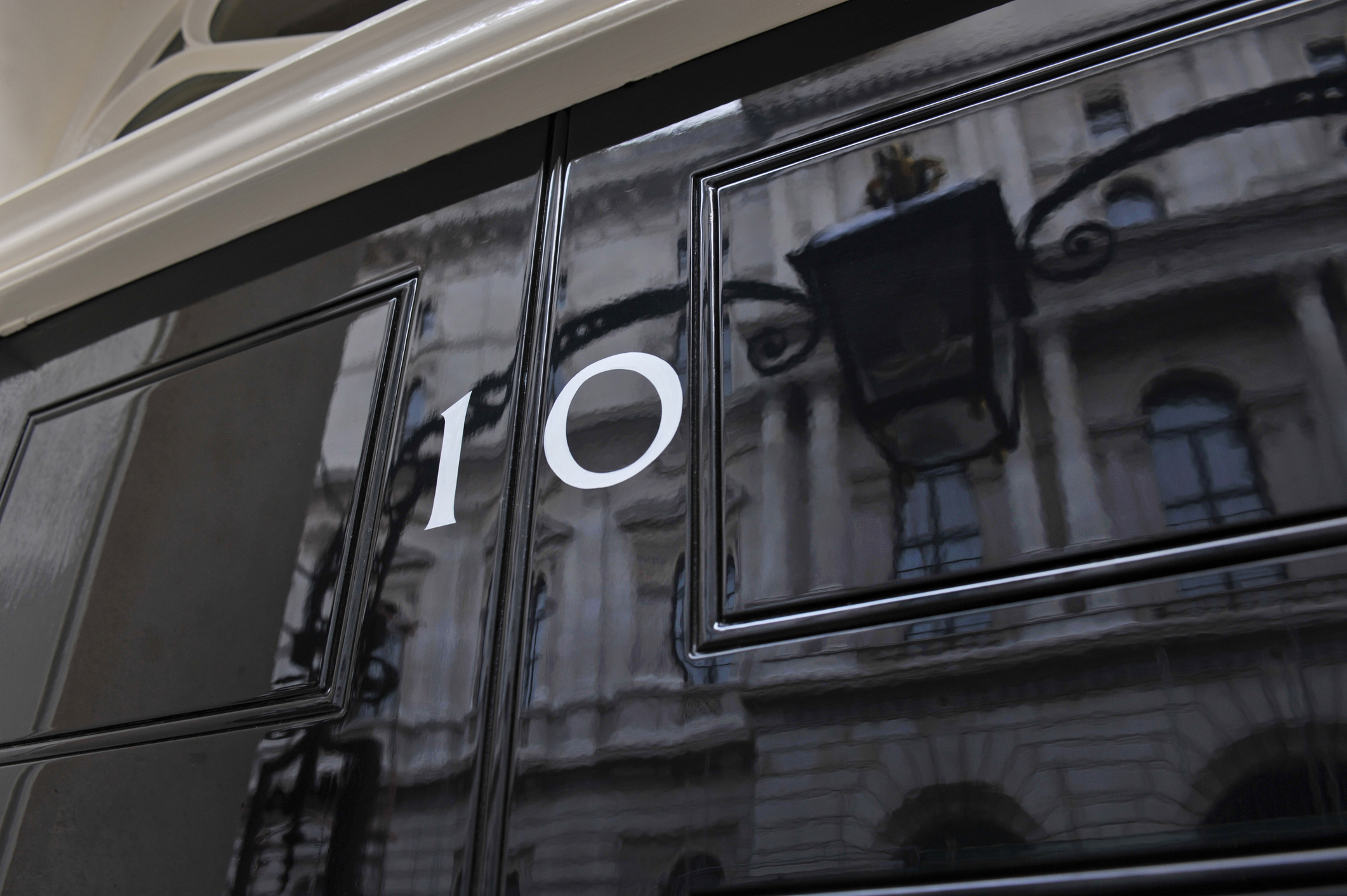The Autumn Budget 2024: Key Things To Look Out For
Written by
Monday 21st October 2024
Last updated: 4th February 2025

As Rachel Reeves gets to her feet on October 30, the country will be braced for what we have already been warned will be a ‘painful Budget’.
Based on the recent discovery of a budgetary black hole, the chancellor says she needs to raise another £20bn. To put this into perspective, this equates to 1.7% of total government spending and would fund NHS England for around 40 days. Another way to think about it is £6 per week per member of the population.
However, it is important to remember that we are only talking about the unbudgeted shortfall and not the actual budget deficit — the difference between how much the government spends and the amount received in tax and other revenues. In the 2023/24 financial year, this was £120 billion, or around £1,780 per head of the UK’s population. It’s a huge figure, but one that is predicted to fall if the right decisions are made, however painful they may be.
No Change To The ‘Big Four' Taxes
Labour has already ruled out any increase in the rate of income tax, National Insurance, corporation tax, or VAT. That said, it’s worth noting that the manifesto specifically referred to taxes paid by ‘working people’, a phrase for which there is no universally accepted definition.
Any change to the basic, higher, or additional rates of income tax would be seen as a breach of promise, but this still leaves the way open for higher taxes on earnings outside of the PAYE system, such as dividends. Such a move would impact high-earning shareholders, but it would also be felt by small business owners and directors who often use a mix of remuneration methods to reduce their tax liability.
There is also the option to extend the current freeze on tax thresholds beyond 2027/28 and thereby increase tax revenues within the current parliament by means of fiscal drag — the process by which fixed thresholds combine with rising wages to mean that a higher proportion of income is paid in tax.

Employer National Insurance Set To Rise
There has been a plenty of discussion recently about whether the freeze in National Insurance (NI) levels includes Employer NI and it now seems increasingly likely that, as this is not technically a tax on ‘working people’, the government feels that changes can be made without breaking any promises.
One option would be to add a levy on employer pension contributions which, according to the Resolution Foundation think-tank could raise £9bn - £18bn a year by the end of the decade, depending on the rate applied and any counter measures designed to soften the blow.
Alternatively, the chancellor could simply decide to increase the standard rate by a single percentage point, taking it from 13.8% to 14.8%. In theory, this would generate an extra £8.5bn a year but it could also stifle growth and thereby limit the net benefit to the Treasury.

VAT On Electric Cars and How We Charge Them
Earlier this month, the Society of Motor Manufacturers and Traders (SMMT) together with 12 major automotive brands, including Ford, Stellantis, JLR, and Volkswagen Group, wrote an open letter to the chancellor calling for more carrot and less stick in the drive to meet net-zero transportation targets.
Citing recent research conducted by SMMT, the letter claims that halving the VAT on new EV purchases would result in an additional two million electric vehicles by 2028. They also called for VAT on public charging to be reduced to match the 5% home charging rate; a move that would benefit lower income households and high-density dwellers who lack the space needed for a home charger to be installed.
Of course, new and used car markets are intrinsically linked and the BVRLA’s #happyEVafter campaign is calling for a range of measures to strengthen used EV sales, including a 50% cut in VAT and a special 0% Benefit-in-Kind tax rate for four years. How practical these measures are and what the net benefit would be is very much open to question, but the consensus is that some form of government action is required.

Boosting Public Charging Infrastructure
Labour’s manifesto pledged that they would support the transition to electric vehicles by accelerating the roll out of public charge points. As outlined in their 2023 plan for the Automotive Sector, this would partly be achieved by relaxing planning rules and accelerating approval. It could also include increased support for local authorities, although this would likely be accompanied by more stringent and strictly enforceable targets. There may also be an extension to the workplace charging scheme, which is currently due to close in around six months’ time.

Expensive Car Tax Supplement for EVs
Petrol and diesel cars with a list price of over £40,000 are currently liable for an additional £410 in Vehicle Excise Duty (VED) annually for the first five years. Thus far, electric cars have benefited from an exclusion, but this is due to end in April 2025.
The price of a new EV has been steadily falling due to increased competition and customer demand, but premium brand EVs such as Audi, Jaguar, Mercedes, Porsche, and Tesla still attract an average price tag of around £69,000. In contrast, non-luxury models are more affordable at £33,000, although they remain more expensive than comparable ICE vehicles, which typically range from £19,000 to £32,000. As a result, either an extension to the current rules or an increase in the cap is likely to have a positive impact on EV sales.
Refining ZEV Mandate Rules
Labour have been clear about their commitment to the 2030 ban on ICE car sales and the current ZEV mandate requires at least 22 per cent of new cars and 10 per cent of new vans sold by each manufacturer in the UK this year to be zero-emission.
Whilst claiming that “with the right measures and the right consumer support, we can fix the foundations of this transition and deliver the biggest technology transition ever attempted” manufacturers have expressed concern about the scale of fines being levied for missing this year’s targets. They have also warned that “these are not consequence-free choices”, and it is “the consumer who pays” as the costs of fines are passed on to the buyer.
In support of a revised approach, Lisa Brankin, chair and managing director of Ford UK, recently said that “a really good plan would be to put the customer incentives in place to give the market momentum and to start afresh from 2026.”
You can learn more about the ZEV Mandate by visiting our blog here.

Pay-Per-Mile Road Pricing
The chancellor seems to be shying away from pay-per mile road pricing that would see drivers charged based on the distance they travel via some form of GPS tracking that is designed to monitor a vehicle’s mileage without encroaching on privacy. Alternatively, the government could opt for a significant increase in toll roads using Dart Charge style automated billing systems. Either way, by using the phrase ‘no plans’ it may be turn out to be a case of not yet, rather than no.

Fuel Duty Set To Rise
The Office for Budget Responsibility estimate that fuel duties levied on petrol, diesel and other fuels brings in around £24.7bn per year.
The headline rate of 52.95p per litre has been frozen since 2011 and includes a temporary 5p cut that is set to run until 2024/25. However, not only is the current discounted rate costing the Treasury around £2bn a year, there are concerns that drivers are restricted from seeing the full benefit. In fact, a 2023 Competition and Markets Authority (CMA) investigation concluded that consumers are being overcharged by as much as 13p per litre.
RAC head of policy, Simon Williams, recently commented that “the chancellor has no option but to put fuel duty back up to 58p a litre.” He went on to say that “replacing fuel duty with a pay-per-mile system as soon as possible is the way forward as then the only tax levied on fuel would be VAT”. Not everyone agrees but something has to give and an increase in fuel duty may be the only option in the short term.
Benefit-in-Kind Fixed, But Not Set In Stone
Benefit-in-Kind (BiK) rates are currently fixed until 2027/28, by which time the 2% rate for zero-emission vehicles will have grown to 5%. This is still a very attractive rate, but it highlights that taxes are only going to go up and the only real question is the speed of change.
It’s also worth remembering that the current rates are fixed but not set in stone and the government may decide to make additional adjustments to further penalise higher polluting vehicles. They may even decide that as EV sales rise there is a need to accelerate the rate of increase for zero and ultra-low emission vehicles.

Britain’s Broken Roads
Chief Secretary to the Treasury, Darren Jones, recently (re)announced a new National Infrastructure and Service Transformation Authority (NISTA) which aims to bring strategy and delivery together in order to ‘get a grip on delays’ and boost private sector investment.
This is positive news for medium to longer term projects but of more pressing importance is the maintenance of Britain’s roads and there is mounting pressure on the government to make good on their promise to fix an additional one million potholes across England in each year of the current parliament.
Affordable Car Insurance
Another pre-election promise was to tackle the soaring cost of car insurance, and with recent reports indicating that premiums have risen by 21% in the past two years, a new Motor Insurance Taskforce led by the transport secretary, Louise Haigh, and the economic secretary, Tulip Siddiq, met for the first time on 16 October.
The most obvious solution would be to cut Insurance Premium Tax (IPT) and the British Insurance Brokers' Association (BIBA) have recently called for the government to cut the standard rate from 12% to 10% with Shayne Halfpenny-Ray, BIBA’s head of policy and public Affairs, commenting that IPT is, in reality, a tax on working people.

Ramping Up Clean Energy Investment
Speaking at the recent International Investment Summit, the chancellor confirmed that the UK Infrastructure Bank will operate as the National Wealth Fund (NWF) and will “catalyse tens of billions of pounds of private investment into the UK’s clean energy and growth industries, including green hydrogen, carbon capture and gigafactories.” We can expect to hear more about what this means in practice over the coming months, but the October Budget will likely include some attention-grabbing headlines that outline the government’s long-term strategy.
Building Confidence In EV batteries
Labour has promised to boost consumer confidence through some form of government backed State of Health (SoH) certification and have previously proposed Electric Vehicle Confident' labels for all new EVs.
It’s interesting to note that The Car Remarketing Association Europe (CARA) has already introduced a European battery health check standard and there are a number of private sector solutions available or in development. It’s clearly an area where there is universal agreement in terms of need but a variety of opinions on how to deliver the best solution and so we may need to wait a little longer for more details.

A Final Word
We already know that there are some difficult decisions to be made and it’s no surprise that the government wants to get the bad news out the way early in the parliamentary lifecycle. Whatever happens, you can be sure that we will carefully analyse the impact of the upcoming Budget and continue to provide the insights and advice that helps business fleet operators and drivers make the right choices at the right time.

